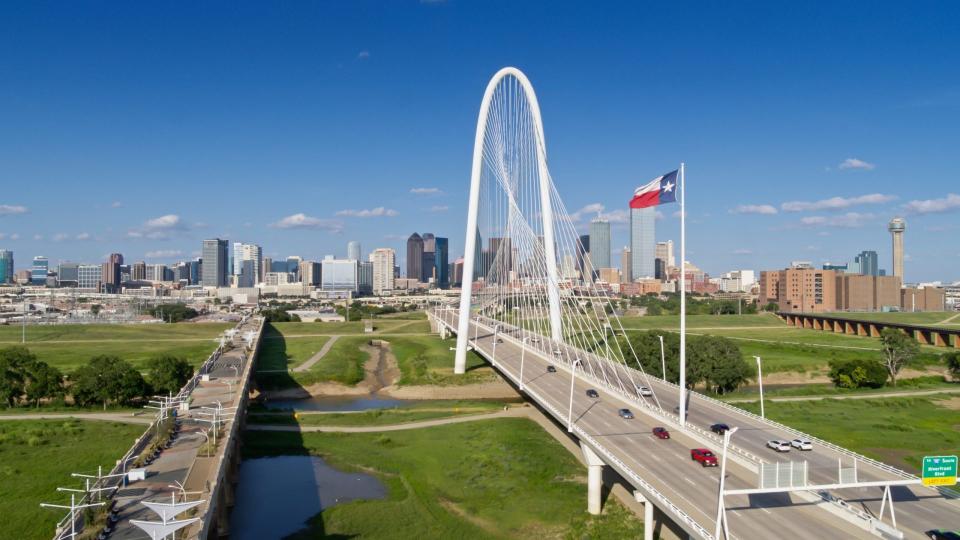Why Texans Choose To Stay In Their Home State More Than Other Americans

While for some people, the grass is always greener elsewhere — for Texans, it’s the greenest in their own state.
Indeed, the Lone Star State natives are the likeliest to stick around, pointing to the state’s economic health, according to a recent analysis by the Federal Reserve Bank of Dallas.
Texas is the best and by far at retaining its native residents, as the analysis found that 82% of native Texans still live there.
Housing Market 2023: 40 Places Poised for a Housing Crisis
In Less Than a Decade, You Won’t Be Able To Afford Homes in These ZIP Codes
Other so-called “sticky” states include North Carolina, with 75.5% of natives remaining; Georgia, with 74.2%; California, with 73%; and Utah, with 72.9%, according to the analysis.
Meanwhile, Wyoming is the least-sticky state, with only 45.2% of natives remaining there, while North Dakota and Alaska were the only other states with less than half their native population staying there, with 48.6% and 48.7% remaining, respectively.
Rhode Island, with 55.2% and South Dakota, with 54.2%, round out the bottom five, the analysis found.
What Makes Texas So Special That Its Residents Never Want To Leave?
For one, Texas does not have income tax.
And according to the Federal Reserve Bank of Dallas, sticky states have a few traits in common: “Sticky states, where the weather is often warmer, tend to offer better economic conditions than non-sticky states. These conditions can be in the form of better and more varied job opportunities or less burdensome tax policies.”
In addition, the five stickiest states each recorded above-average job growth between 2010 and 2019, meaning there was less pressure for residents to leave to find work. Finally, housing costs also play an important role.
In turn, Business Insider noted that this phenomenon has helped the economy. For instance, between July 2022 and 2023, Texas added over 441,000 jobs, the most of any state in the nation.
In addition, between February 2020 and the end of last year, the state accounted for 35% of the U.S.’s net increase in employment during that time period. Meanwhile, between 2020 and February, 139 companies moved their headquarters to the Lone Star State.
Some of these companies include Tesla, Oracle, Hewlett Packard Enterprise and Toyota Motor, according to Reuters.
More From GOBankingRates
Money Expert Rachel Cruze Recommends Buying These 10 Used Cars for Under $10K
11 Uncommon Investments That Can Actually Make You A Lot of Money
5 Fastest Ways to Raise Your Credit Score Without a Credit Card
This article originally appeared on GOBankingRates.com: Why Texans Choose To Stay In Their Home State More Than Other Americans

 Yahoo Finance
Yahoo Finance 